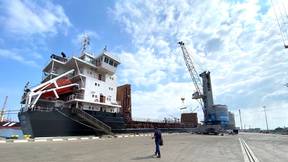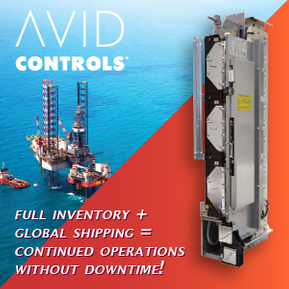An extra T in TSMS, nowhere left to hide from systems documentation, and an emphasis on continuous improvement.
Back in January of this year, the United States Coast Guard (USCG) predicted Subchapter M would be released in spring 2016. I put my money on June 20, that being the very last day of spring, and on June 20 the long-awaited regulation was finally published.
Subchapter M doesn’t come with much we weren’t expecting, which is a good thing. Surprises in this industry are not met with enthusiasm. The USCG should be complimented in that regard. Aside from its impact on approximately 5,500 vessels and 1,100 companies, this legislation was needed, and many companies were mostly there already.
Some people even thought the legislation did not go far enough. I, for one, believe it is a start, and starts are important. Slow steps are needed to enact monumental change, as is careful deliberation. Risk assessment is a requirement in this new regulation. The same risk assessment should be used by the USCG and industry partnership to indicate how much further the regulation needs to go. Only in time will we understand what was left out of the original subchapter and still needs to be addressed.
My question is why the regulation is called a Towing Safety Management System (TSMS). The industry should demand the “T” be dropped as the regulation doesn’t just apply to towing operations. When the vessel is running light boat with no tow, does that mean the SMS doesn’t have to be followed? Sorry, no, it is still in effect; tow or no tow. The TSMS actually applies to the whole operation of the company, the vessels and the crews. “Safety Management System (SMS)” is a more generic and appropriate term in my view.
Subchapter M, like other subchapters, is concerned with vessels of a specific size and type. Subchapter M applies to vessels 26’ or greater engaged in certain towing or pushing operations. Enough said. There is no need to add the word “Towing” to “Safety Management System.”
You may be wondering about the Certificate of Inspection (COI) option. Coming from the unlimited tonnage side of the industry, I call this option “old style,” because it’s what we had before most companies went with the Alternative Compliance Program (ACP) back in the 1990’s. Even with the COI option, you will still be required to train your employees and ensure they follow procedures. The USCG will require a “Health and Safety” manual or plan on board and you will still need some type of system.
What will this change mean for crews? No matter where you go, or who you work for, some sort of system will be in place to ensure a practice of “do-what-you-say, say-what-you-do and prove-it.” For those captains and crew that hate paperwork and retreated to smaller tonnage, your time is up. Perhaps you can find work on a vessel less than 26’ in length (and is not involved with hazardous or petroleum cargoes), but that doesn’t mean those companies won’t have bigger vessels and a one-SMS-fits-all-vessels mentality. You may be stuck with following Subchapter M on a 25.5’ tug, as a requirement of employment. And most other industries also have similar systems in place. Surrender to job safety analysis, tool talk meetings, or some other moniker. It’s time to embrace safety meetings and management reviews.
The biggest change contained in the officially published Subchapter M rule is the inclusion of a robust non-conformity/corrective action system in the SMS. This means a systematic procedure to document where your SMS isn’t working or addressing required regulations, what corrective action is being taken, and if this corrective action is effective in addressing the non-conformities. This sums up the continuous improvement model of “plan, do, check and act.”
Your system needs mechanisms to ensure the procedures are actually followed as written, or the procedures need to be changed. The system must also have mechanisms to identify the need to add a documented procedure. These mechanisms could be reviews of accidents or near-accidents, or internal and external audits. Also required is a systematic approach to review the SMS. Non-conformities can be the result of a management review, either by top-level management, or by captains and crews. Those directly impacted by the SMS should be able to effect change as well. Your company should take great efforts to ensure that written procedures represent what actually occurs on vessels on a day-to-day basis. Captains and crews can help with this. Enlist their help.
For an auditor, this continuous improvement element can sum up the whole operation. How well management can admit they have a problem, figure out the best way to incorporate a change, correct the problem without causing more problems, and do so in a timely manner, is a good indicator of the health of a company overall.
The Author
Captain Katharine Sweeney is CEO of Compliance Maritime, provider of independent internal auditing of security, safety, quality and environmental management systems for vessel operators. Captain Sweeney is an experienced Master Mariner, safety expert and federally licensed pilot with over 25 years in the Maritime Industry. Contact her at [email protected]
(As published in the September 2016 edition of
Marine News)

